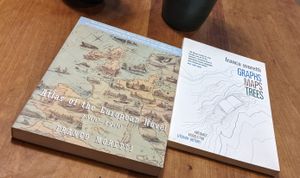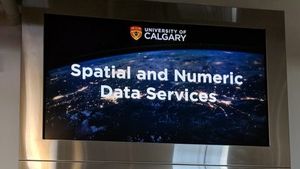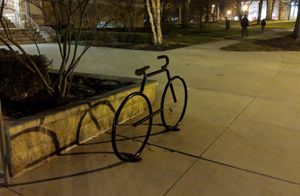Franco Moretti has an interesting short book called Graphs, maps, trees: abstract models for literary history. He proposes a way of reading literary history which involves abstracting patterns across large stretches of a literary field rather than examining “concrete, individual works”. In particular, he works with three organizing models: graphs, maps and trees. He calls this type of reading ‘distant reading’, a method which can be applied to large bodies of literature and which yields a different form of insight than close textual analysis of a selective canon.
Via a conference report by Eric Lease Morgan I recently came across John Unsworth’s use of the phrase “reading at library-scale”.
My own research career as a faculty member, for the last 20 years, has been devoted first to understanding the impact of technology on the humanities and, more recently, to designing tools that would allow humanists to work at library-scale, using the computer as a kind of attention prosthetic that allows us to perceive patterns made up of very small pieces of information across very large expanses of text. Having perceived those patterns, of course, it is still up to us, as human beings with expertise in a relevant domain, to make sense of them and to persuade others to share that sense. [Abstract – reading at library scale]
Unsworth and Moretti both feature in an article published in The Chronicle a couple of days ago: The humanities go Google.
This considers ‘distant reading’ or ‘reading at library-scale’ in the context of Google Book Search.
Data-diggers are gunning to debunk old claims based on “anecdotal” evidence and answer once-impossible questions about the evolution of ideas, language, and culture. Critics, meanwhile, worry that these stat-happy quants take the human out of the humanities. Novels aren’t commodities like bags of flour, they warn. Cranking words from deeply specific texts like grist through a mill is a recipe for lousy research, they say–and a potential disaster for the profession. [The humanities go Google]
Now, the article sets up an opposition which may be a convenient hook for a story, but is probably less important than some of the ways in which humanities scholarship will develop when large amounts of material are available for computational analysis in this way.
In this context, I was interested to read how ‘distant reading’ involves a cross-disciplinary team: “To sort, interrogate, and interpret roughly 1,000 digital texts, scholars have brought together a data-mining gang drawn from the departments of English, history, and computer science”. Unsworth also discusses collaborative multi-disciplinary work of the type which produced MONK, for example.
From a library point of view it is interesting to see humanities scholarship acquiring some of the features – and support requirements – more characteristic of the sciences.
Picture: I took the feature picture of a couple of Moretti's titles.
Note: Cosmetic updates added on 31 March 2021 to fix spacing and add picture.




